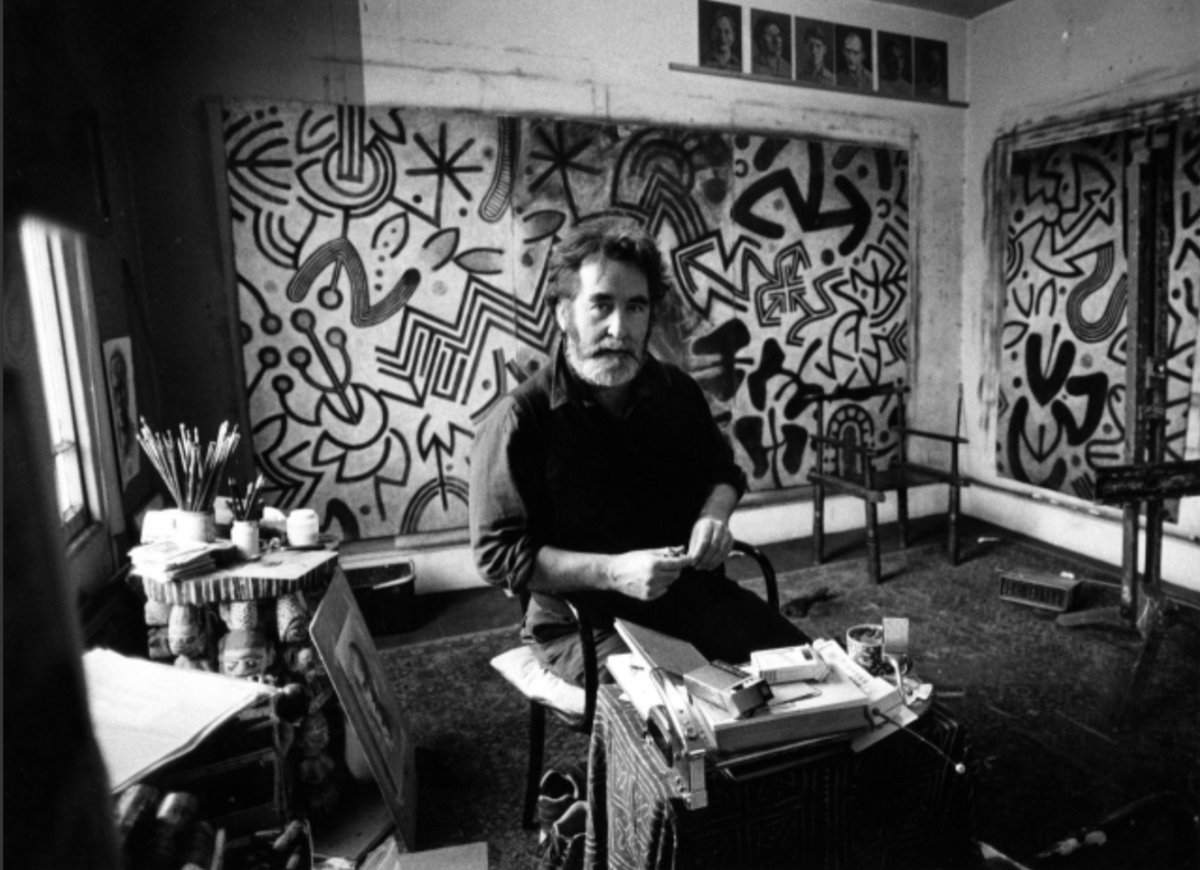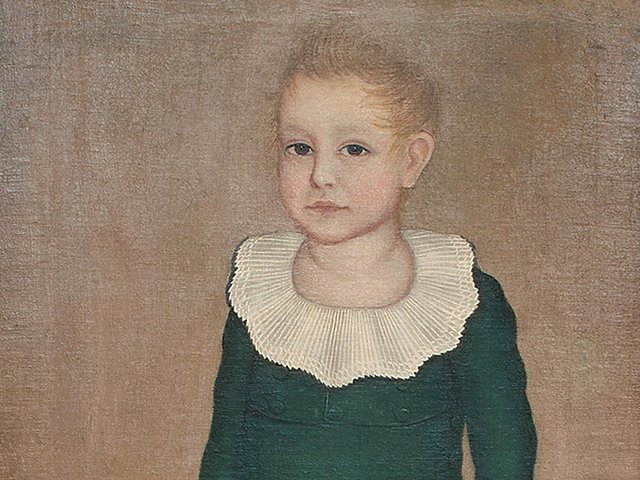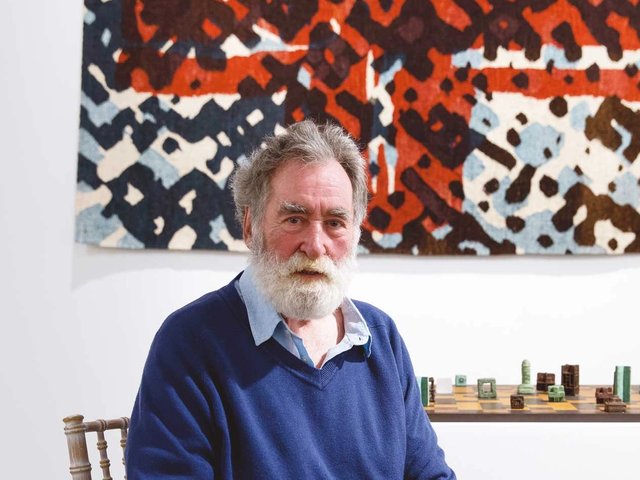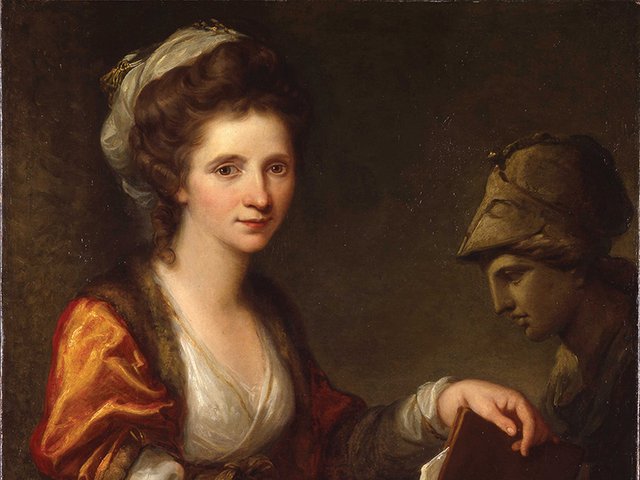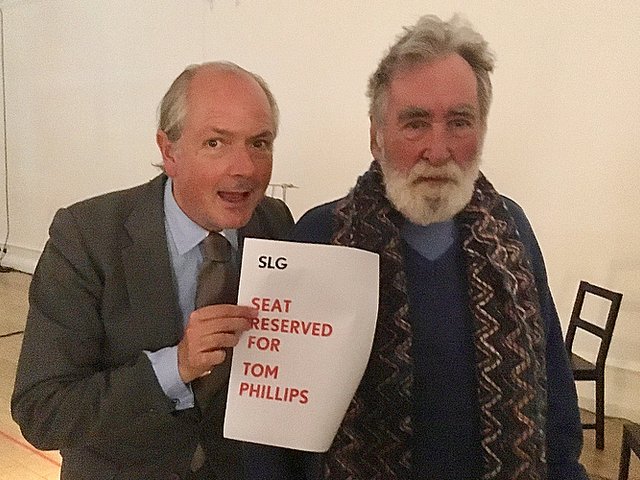The polymath British artist Tom Phillips—who worked as a portrait painter, musician, concrete poet, curator, composer and librettist of operas and served as long-standing chairman of the Exhibitions Committee at the Royal Academy, in London—has died, aged 85.
Phillips was an artist with an extraordinarily broad range, part of a generation who allowed themselves to work in all and any genres. He painted, both figuratively and abstractly, took photographs in series, created sculpture and site-specific work, illustrated fine editions of the works of Cicero, Dante and Lawrence Sterne, and devised distinctive ornamental forms of writing. His masterpiece was the extraordinary multivalent "treated book" series A Humument (1966-2016).
TOM PHILLIPS
— Tom Phillips (@TomPhillipsArt) November 29, 2022
24th May 1937 - 28th November 2022 pic.twitter.com/ZlOBV5fs8J
“Tom Phillips was genuinely learned in the best sense," Norman Rosenthal, a long-time Royal Academy colleague, said following Phillips's death. "He was a true polymath deeply versed in literature, music, and most of all of course in visual art and its practice through his own very personal touch. But also the most witty of individuals, aware of the ironic failings of all three of these endlessly wide worlds of culture, which yet he simultaneously always cherished and loved."
The curator Charles Saumarez Smith remembered Phillips as one of the first artists he got to know in the mid-1970s. "He became one of my trustees at the National Portrait Gallery [in London], where he was an incredible fount of knowledge about sitters, including especially musicians, as he was nearly equally knowledgeable about music as he was about art".
Phillips was born in south London in 1937 and showed talent at music and art at school before studying English at St Catherine's College, Oxford, and at Camberwell School of Art (1961-63), where he was taught by the painter Frank Auerbach. He held his first London show in 1965 and won a John Moores Prize in 1969.
He was a true polymath deeply versed in literature, music, and most of all of course in visual art and its practice through his own very personal touchNorman Rosenthal
Phillips was well-known for his vivid, characterful portraits. In 1989 a retrospective of these works was held at the National Portrait Gallery, in London. The gallery's holdings of his include a 1984-86 oil (with seven related studies) of the novelist Irish Murdoch, and portraits of the musician Brian Eno—Phillips taught Eno in the 1960s, and they later collaborated on avant-garde music projects—the theatre director Peter Hall, the cricketer Geoffrey Boycott and the composer Harrison Birtwistle. The gallery also has a characteristic pen and ink and gouache work, Tom Phillips ('Humument Self-Portrait at Fifty', 1987), created as part of the imaginative world of Phillips's multi-edition A Humument: A Treated Victorian Novel originally by W.H. Mallock.
The creation of 'A Humument'
In 1966, Phillips had bought, entirely at random, and in company with the artist Ron Kitaj, a copy of A Human Document, a threepenny second-hand edition of a 1892 novel by the economist and writer William Hurrell Mallock (1849-1923), to use as the basis for a long-term art project. That project, A Humument —in which Phillips painted, drew, and made collage and speech bubbles over the pages, scratching out words with a Rapidograph pen, to create a new story about the challenge of making art, and using characters from the original novel—was completed, in its first iteration, in 1973.
The finished artwork was shown at the Institute of Contemporary Art and Serpentine Gallery, in London, and then in 1975 at the Kunsthalle, in Basel, where it was seen by the collectors Ruth and Marvin Sackner. The Sackners, as Phillips wrote, became "the owners of that entire first manuscript [now in the Sackner Archive of Concrete and Visual Poetry, Miami] as well as keen supporters of the continuation of the project". Phillips subsequently reworked the first trade edition of the work, published in 1980, into multiple successive editions—each version with successively more pages reworked and collaged—culminating in the iteration of 2016, the 50th anniversary of the project's inception.
Phillips discusses A Humument at the time of the publication of its 2016 edition
In his introduction to the 2016 edition, Phillips described the birth of A Humument in characteristically fluent and erudite fashion:
"A Humument started life around noon on the 5th of November 1966; at a propitious place. Austin’s Furniture Repository stood on Peckham Rye, where William Blake saw his first angels and which Van Gogh must have passed once or twice on his way to Lewisham. As usual on a Saturday morning R. B. Kitaj and I prowled the huge warehouse in search of bargains. Arriving at the racks of dusty books left over from house clearances I boasted that the first one I found that cost threepence I would make serve a serious long-term project..."
"A Humument started life around noon on the 5th of November 1966; at a propitious place. Austin’s Furniture Repository stood on Peckham Rye, where William Blake saw his first angels and which Van Gogh must have passed once or twice on his way to Lewisham"Tom Phillips
In 2010 he produced a version of A Humument for iPad and IPhone, delighting in the effect created by the backlighting of its pages on an iPad screen. In 2015 an entire room of the Royal Academy Summer Exhibition was devoted to the work. A Humument provided Phillips with source material for his opera Irma (first produced in 1973) and for his 1982 edition—translation and illustrations—of Dante's Inferno. It also fed into two "fictitious globes" (now in the Victoria & Albert Museum), the inside and outside of a skull, and an illustrated edition of Cicero’s Orations.
Phillips was chairman of the Exhibition Committee of the Royal Academy for 12 years from 1995. He curated the RA’s exhibition Africa: The Art of a Continent (1995) which subsequently went to the Martin Gropius Bau, Berlin and the Guggenheim Museum, New York. He found himself in the firing line during press outrage over the 1997 Sensation exhibition after one visitor was so offended by Marcus Harvey’s Myra, composed of the hand prints of children, that the painting had to be removed temporarily from display after it was pelted with eggs. At the National Portrait Gallery he curated We Are The People (2004), a show of his postcard photographic portraits from the early part of the 20th century.
RIP Tom Phillips 1937-2022, we loved working with you and Irma… https://t.co/baHoHouOMx
— Apartment House (@house_apartment) November 29, 2022
One of the most memorable pieces from Phillips's inimitable oeuvre is 20 sites n years, a series of photographs taken every year since 1973, during the same week, at the same time, in 20 locations in a close radius around his London studio. It is the subject of a 2016 documentary by Jake Auerbach.
To mark Phillips's 80th birthday in September 2017, a new production of his work Irma: An opera, opus XIIB was mounted at the South London Gallery. The gallery, where Phillips had first exhibited in his youth, immersed visitors in a series of projected images, and Phillips read from A Humument. Louisa Buck of The Art Newspaper described the opera performance that day as a "sharp sideways glance at the current ranks of the contemporary art world. This took the form of the chorus of three 'Art Officers in Uniform', brandishing illuminated clip boards and uniformly clad in the suits, lace-up brogues and heavy horn-rimmed glasses so beloved of curators and gallerists from Glasgow to Gwangju".
A clip from Jake Auerbach's 2016 documentary on Phillips's 20 sites n years, a series of photographs taken during the same week, at the same time, since 1973, in 20 locations around his London studio
Trevor Thomas Phillips; born London 25 May 1937; RA 1989; chair, Exhibition Committee, Royal Academy, London 1995-2007; CBE 2002; Slade Professor of Art, Oxford University 2005-06; married 1961 Jill Purdy (one daughter, one son; marriage dissolved 1988), 1995 Fiona Maddocks; died London 28 November 2022.


